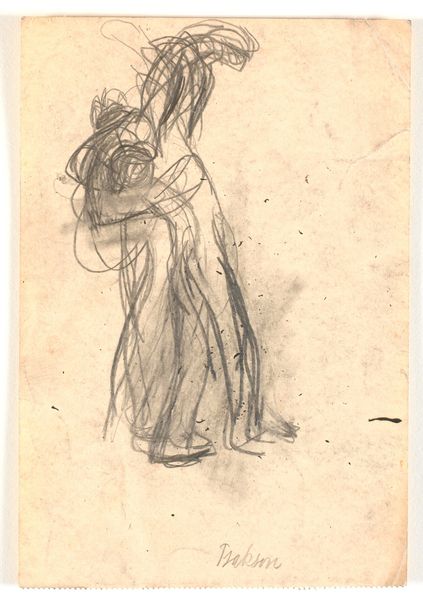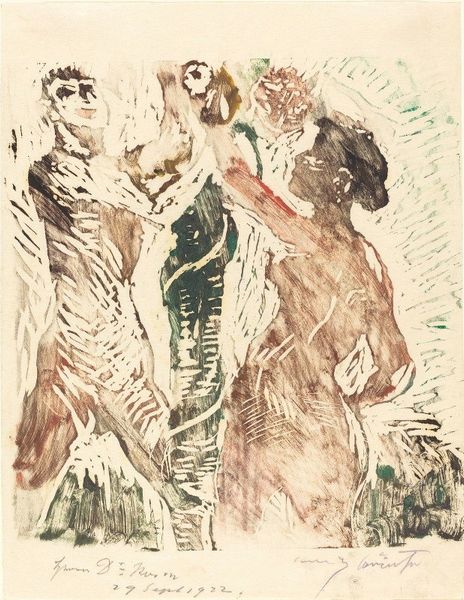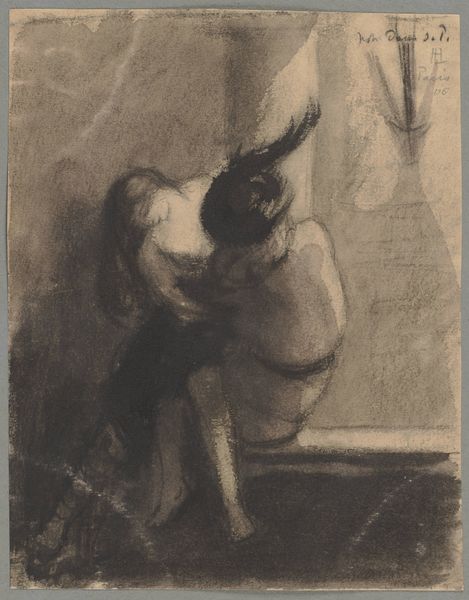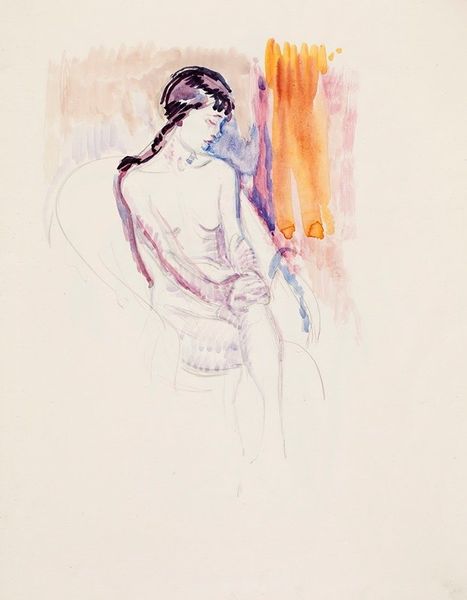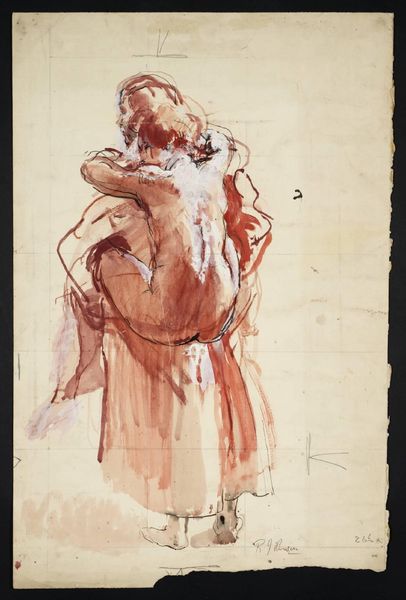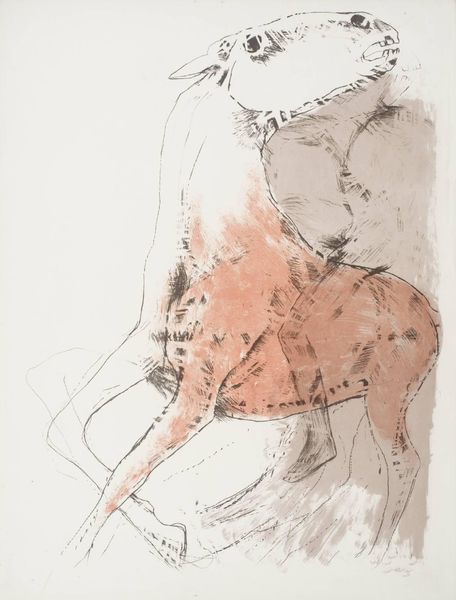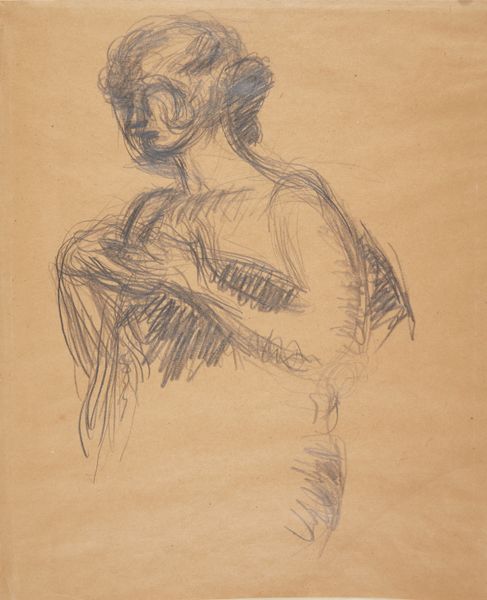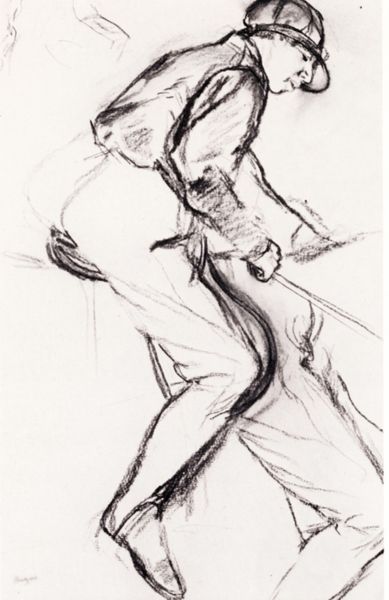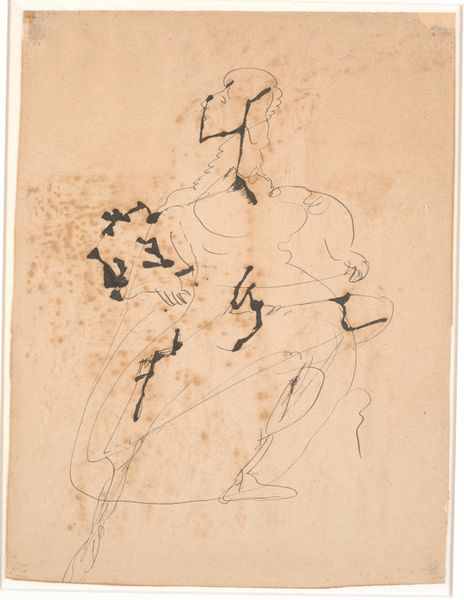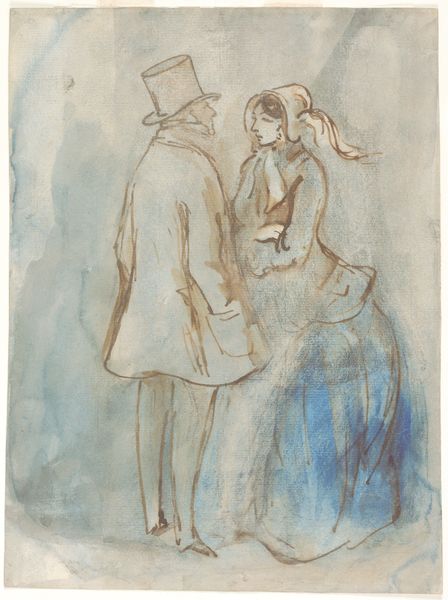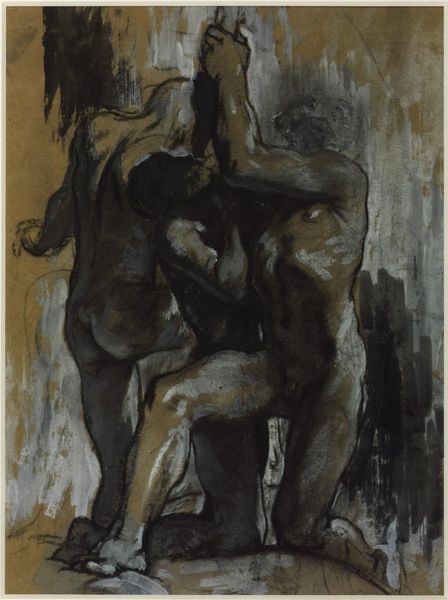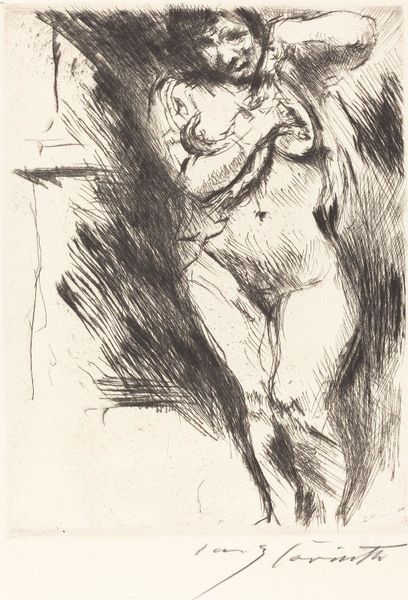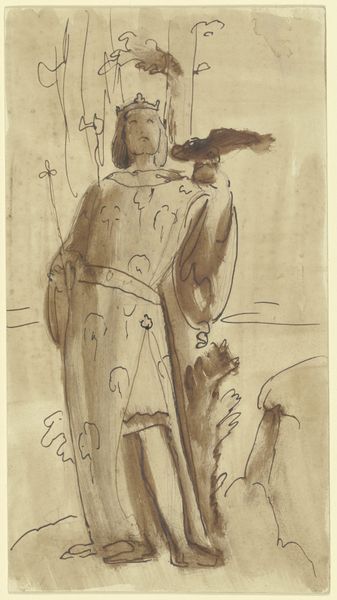
drawing, charcoal, pastel
#
portrait
#
drawing
#
impressionism
#
charcoal drawing
#
figuration
#
female-nude
#
pastel chalk drawing
#
charcoal
#
pastel
Dimensions: 24 1/8 x 15 1/2 in. (61.3 x 39.4 cm)
Copyright: Public Domain
Curator: Edgar Degas' "Two Dancers," created around 1873, captivates viewers with its subtle charm. The artist employed pastel and charcoal in this work, which now resides at the Metropolitan Museum of Art. What is your initial impression of this piece? Editor: The initial feeling is ephemeral, like a memory fading at its edges. The figures seem caught between movement and stillness. There is a vulnerable intimacy in their quiet poses and expressions. Curator: Indeed. Degas often explored the theme of dance, depicting dancers not in idealized forms, but with a realist's gaze that challenged classical notions. I read these ballet figures as icons of perseverance in the face of often unreasonable and dangerous pressures. Editor: Exactly. While the Impressionists reveled in light and beauty, there is an interesting socio-economic angle here too. These dancers came from a broad social strata to be scrutinized and commodified for wealthy male patrons. Their tutus could never quite mask this precarious labor relationship. Curator: The way he uses line to define form also carries a specific significance. Look closely and note how the strong dark strokes contour and capture weight. This is no fleeting moment of light, but the physical culmination of long grueling labor, and it almost stands in defiant opposition to typical representations of ballet. Editor: Right, his sketches highlight a tension between grace and the immense strain, and almost feel like social commentary in their own right. By showing them as people in time rather than abstract beings, Degas forces viewers to reckon with the complex reality these women navigated. Curator: I see them not just as individuals in history, but symbolic figures. They reflect our culture’s simultaneous glorification and exploitation of youth and femininity. Their presence on the canvas transcends the specifics of time and place to offer a timeless reminder of these patterns. Editor: Ultimately, viewing "Two Dancers" can serve as a moment to consider both the history of the ballet and reflect upon labor struggles today. Curator: It has been insightful to explore with you the nuances and cultural memories embedded in the art piece "Two Dancers," allowing me to appreciate how the intersection of time, material, and artistic rendering enriches this piece with cultural meaning.
Comments
No comments
Be the first to comment and join the conversation on the ultimate creative platform.
